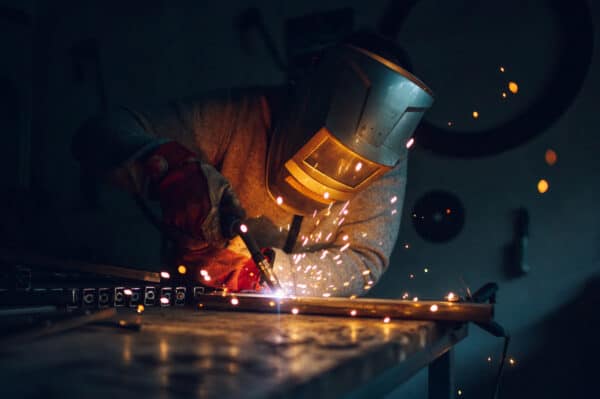Do you know your weld cost? How much money are you wasting? If someone asked you: Are you pleased with the production output of your welding department? What would your response be?
For those of you who answered yes, how did you get to that decision? Do you know your weld cost? Which variables are you using that influence this cost? How do you measure weld efficiency? Hopefully, the answer to those questions wasn’t relying on the “expert” welder or robot programmer to determine production run rates that lack fundamental welding knowledge.
Determining Weld Costs
If you are like most organizations across the globe, you probably have no idea what your weld costs are. When sparks and smoke are present, the welder is productive and efficient in management’s eyes. This mentality is very common in the welding industry and has cost companies billions as they are unknowingly flushing profits down the toilet!
Many weld shops estimate cost based on past experience, rather than the welding process, equipment, consumables, and welder capability.
Improve Your Welding Operation to Reduce Weld Cost
The improvement goals of any welding operation should be to REDUCE the following:
- Weld metal volume
- Arc time per weldment
- Rejects, rework and scrap
- Work effort
- Motion and delay time
Weld Metal Volume
There are several sources for over welding:
- Design engineer – selecting welds larger, longer or higher in quantity than necessary
- Welder – depositing welds larger or longer than required
- Part fit-up – large gaps and weld joint geometry

Arc Time Per Weldment
Arc time is defined as the amount of time the welding arc is maintained while making a specific length of weld. Several (of many) sources influence the arc time per weldment:
- Weld process
- Weld process variables – Amperage, Voltage, wire feed, electrode extension, work angles, shielding gas, wire diameter, travel speed, electrode position, etc.
Now let’s talk about both manual and robotic welding for a second. A reasonable question for a shop manager to ask would be, “are those robots/welders providing their complete productivity potential?” After all, these robots/welders aren’t cheap…
Too many times, weld schedules are determined by robotic weld programmers and “expert” welders. Sure they can program or make a nice-looking weld externally, but have they fully optimized the welding process to achieve the highest quality and fastest run rates? Do they understand the metal transfer modes for GMAW? What about shielding gas influences? If your weld staff does not have a full (and correct) understanding of welding economics and the effects of all variables used in the welding process…YOUR PROCESS IS NOT OPTIMIZED AND YOU ARE WASTING MONEY…PERIOD!

Rejects, Rework and Scrap
Quality issues can cost companies unimaginable amounts of money. Often these factors can be traced back to one of the following:
- Insufficient training of welders
- Weld personnel’s lack of understanding of essential welding variables and their effect on quality
- Lack of welder qualification requirements
- Lack of workmanship standards
- Non-adherence to existing workmanship standards
- Lack of proper surveillance by welders and supervisors
o No inspection of work
o No monitoring of essential welding variables - Inadequate welder skills
- Poor weld joint fit-up
- Poor welding accessibility
Work Effort
When reducing work effort, you are decreasing the amount of non-arc time the welder spends during the work shift. Reducing work effort also has a quality benefit as welders are less physically and mentally fatigued by shifts end.
A few considerations:
- Alignment of subassemblies and parts – does the welder have fixtures or alignment tools to help with fit-up and welding?
- Ease and ergonomics of weld fixturing – are the fixtures easy to operate and in a position that puts the least amount of fatigue on the body?
- Weld accessibility – are welds made with enough access for the welder to see and use proper weld technique?
- Weld position – are as many welds made in the flat or horizontal positions as possible?
Motion and Delay Time
Motion and delay time are non-arc time tasks that add to weld cost. Several common example are:
- Initial equipment set-up
- Equipment breakdowns
- Body motion (hand and foot)
- Shop layout
- Alignment of fitting parts
- Tacking of parts
- Set-up and time between weld passes
- Cleaning and grinding during welding
- Preheating
- Locating parts
- Engineering drawing errors casing rework or scrap
Ready to stop wasting money by optimizing your welding operation from top to bottom?



